
When you come to a new place and you have limited time, you feel you want to squeeze every moment like a lemon getting all the essence at once. Kraków is definitely a place to fall in love with. Gosh, we would say more - get married, start a family and live happily ever after! 😉 Don’t worry if you are not ready for such commitment, it can be a great experience just to come over here for a weekend. And we will tell you how to visit so you get the most of it!
Immerse with the Old Town
There are many ways to explore Kraków. For history lovers, there is the charming Old Town with the famous Main Square (the greatest mediaeval trading area in Europe) and the hill with Wawel Royal Castle and Cathedral. That can be extended for some alternative background if you also visit the former Jewish Quarter - Kazimierz where you can immerse in the atmosphere of one of the oldest and the most important centres of European Jewish culture.
Today’s centre of Kraków is actually one city built from a few different historical metropolises - the former Polish capital itself and its neighbours - Kazimierz and Kleparz. That mediaeval agglomeration was later extended when in 1915 Kraków united with Podgórze (a separate city on the other Vistula riverbank). During WWII the complicated status of Kraków, declared by the Nazis as a German city, paradoxically helped to preserve it. After it was liberated by the Soviet Army, the new communist government started an era of steel, coal and indoctrination. Polish people bravely resisted over the next few decades which led them to form great social movements like Solidarity in the 1980s. Finally, in 1989 the iron curtain had fallen, opening Poland for the rest of the world again.

Kraków Old Town's alley (Pijarska street), next to the city walls, preserved its original shape.
The story of Kraków can be told by its streets, monuments and buildings and also by guides, who grew up in their city. That is how at Walkative! we like to tell you our city story, check here our Old Town free walking tour. That will be the best way to start your visit. During the 2,5 h walk you can immerse in the Old City, its architecture and stories, starting from the Florian Gate, following the city walls and reaching the Main Market Square where you will hear a Bugle Call from St Mary’s basilica tower. That signal played here every full hour is supposed to have a mediaeval origin, but our tour guides may reveal more details of what is really behind that legend.
The tour will continue towards the Wawel Hill, the Castle and unique Wawel Cathedral, taking you also to the historical quarter of Jagiellonian University and passing by the famous Pope’s Window. As you are in the most beautiful city of Poland, expect also meetings with classic and contemporary art. Sculptures of Igor Mitoraj, stained-glass windows of Wyspiański - polish modernist, or renaissance construction of Bartolommeo Berrecci, are definitely memorable and worth a moment of admiration.
Best spots to taste local food
After such a walk (around 2,5 km) you deserve a good lunch and a taste of some Polish specialities. If you wish to try something really local, go for 'Bar mleczny' (en. "milk bar") - a cheap canteen serving Polish food that became very common in the communism period and it's still a great way to explore local cuisine. You can find them in various areas of the city, still popular mainly among students, working class and the homeless. After the Old Town tour the one closest to you will be “Pod Temidą”, placed in the Old Town, sort of a "premium" one, so don’t worry to pop in if you require a minimum standard. Feeling more adventurous? Go to Nowa Huta communist district, find the cheapest bars with a three course menu for less than 5 euro!

'Żurek', traditional Polish sourdough soup.
Milk bars would be a real treat if you want to explore what local cuisine is about. If you don’t know what you should order to start your adventure - check out our article where we explain 29 things to try when visiting Poland.
Jewish heritage & art - great mix you wouldn’t expect
Starting from Szeroka street, it is very possible you will walk with sounds of Klezmer music and see book shops focused on great Polish Jews heritage, because ‘Kazimierz’ (this former mediaeval neighbour of Kraków where Jews were moved in 1400s) is still trying to keep this spirit alive. It is also thanks to multiple initiatives aimed at restoring Jewish life and culture. The best way to explore this neighbourhood will be our Jewish Kraków free walking tour which will take you to all the important historical monuments, synagogues as well as the Jewish Community Centre, working on uniting all generations of Kraków’s Jews.
The 2.5 h tour will take you from Kazimierz to Podgórze - the area on the other riverbank, where Jews were forced to move in 1941 and where Nazis established the WWII ghetto. Despite a horrible history, it is still an important part of the city, very popular among the locals and becoming a kind of ‘alternative Krakow’. Both areas have been connected with a modern and stylish Bernatka’s Bridge (a.k.a. Kraków lover’s spot). Don’t be surprised to find many murals and contemporary art galleries there. This is where our ‘alternative’ tour, the Street Art of Kraków goes - a very inspiring walk that you can follow using our Walkative! Map.

The Old Synagogue on Szeroka Street, centre of the Jewish Quarter of Kraków.
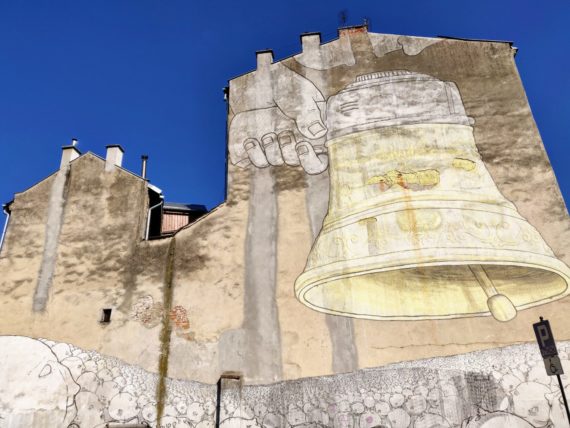
Street Art in Podgórze district - "Never Follow" by Italian artist Blu.
Kraków by night
When night falls, it would be good to check where Kraków goes out. There are many options, but it’s always good to start your evening with food. As people in Kraków are really into international cuisines (hard to judge them if you think about those many years behind the Iron Curtain), you can find only a few really good Polish style restaurants. There are exceptions, though. Close to the historical Jewish Quarter, you may step in Kuchnia U Doroty, one of the best spots for ‘pierogi’ - local dumplings. Well, Polish cuisine is all about comfort food so if you want to truly experience it, give yourself an opportunity to taste and talk about it on our Food and Vodka tour.
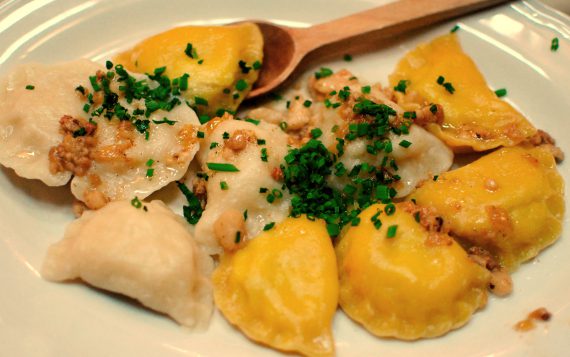
Polish 'pierogi' can be served in various ways and with different stuffings (sweet and savory both).
Do you want some luxury or feeling a bit fancy? Well, every person in Poland would tell you to try ‘Wierzynek’ on the Main Square. Place has a long tradition, the name even comes from a mediaeval merchant who used to host kings in his palace. Very stylish atmosphere makes it a choice of Polish officials when they have informal meetings in Kraków.
Looking for a party, you should go back to the Jewish Quarter. The alternative vibe of this area started years ago in many pubs and cafes that still lingers on - check out the legendary Alchemia or Stara Zajezdnia (located in the former tram depot). You remember the bridge of lovers? It is lightened beautifully at night and can lead you to some bustling places. On the other side of the river you can find the former Hotel Forum - a pearl of modernism style and beloved summer spot for locals (opened in winter as well, but it’s hard to enjoy the beach then…). You can continue this romantic walk down Vistula boulevard until you will find a barge (‘Barka’) - a real bar on a boat. That spot is very well known by those who are looking for some modern rhythms.

Saint Kinga's chapel, with her altar and remains there, Wieliczka Salt Mines. Source: Wikipedia.
Legends of salt and kings
We hope you had a good time last night, rested well and are ready for more exploration! For the second day let’s move away from the city centre for a while. Just outside Kraków you can explore Wieliczka - a small town having mining origin. The story starts with the legend, when in middle ages a Hungarian princess Kinga was supposed to throw away her ring to the cavern before she left her home. Then, married to Kraków’s duke, she ordered to start digging in Wieliczka. A huge rock broke on two and revealed the same ring in a solid block of salt.
The rest is not just a legend, salt miners kept working there and they created their own underworld, with astonishing chapels and halls, all made in salt. True labyrinth of these corridors will reveal many secrets and surprising pieces of art. This UNESCO heritage site can be visited only in the group with a guide. You can book an organised tour from Kraków here or go directly to the Wieliczka Salt Mine website to book your tickets. Getting there from Kraków is not difficult. We explain in this article more about it. Anyhow, Wieliczka is definitely a must to put this on your list when visiting Kraków.

Krak Mound is still a pagan mystery. Was there a mythical king's grave?
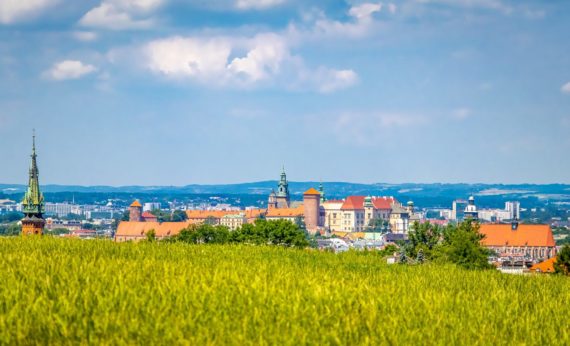
The panorama of Krakow from the Krak Mound's area.
After Salt Mine you should head back to the city, but we encourage you to make a stop on the way. If you can pop off in Podgórze, there is an area of Krak Mound nearby. That is a local curiosity as there are two mounds like this in Kraków. They are supposed to have pagan’s origin. It is a mystery what was the purpose for them - legends are about important royal burials but historians believe these were… spots to study celtic calendar, as Celts were passing by this land in the 2nd century before they arrived in Britain.
Whatever it once was - today Krak Mound is the locals most beloved viewpoint in the city. You can climb it and walk around a nice green park. If you visit Kraków in summer, you may consider coming back in the evening as it is also a popular spot to make a nice romantic picnic.
Walking down the area of former Schindler’s Factory
Now you are just a few minutes by foot from our next destination. The one captured by Hollywood and its guru, Steven Spielberg, who came here in the 1990s to make one of his milestones, the ‘Schindler’s List’. However, the museum is much more than just a spot for movie lovers - there is an exhibition about Kraków under Nazi occupation. A very rich collection of photos, people’s testimonies, multimedias all doing a great job to teach us about the fate of the people of Kraków during that period. The museum can be visited individually but we strongly recommend taking a guided visit to get the most of it. Make sure you book our Schindler’s Factory tour - our guides will help you understand and connect stories with their WWII narration and will also explain how reality was different from Spielberg's vision.
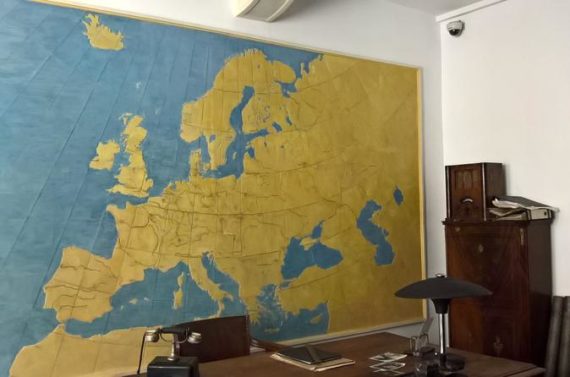
Oscar Schindler's office. Part of the exhibition in Schidler's Factory museum.
The factory was once way larger than the office building we see nowadays, but these constructions didn’t survive until today. The post-war structures that replaced the factory were recently adapted to host MOCAK - Museum of Contemporary Art of Kraków. It holds a large art collection, art library and designer art objects for sale. Exhibitions are changing so visit their website to see what is currently being shown.
The place we must not forget
Our last day may be the most important in your whole stay. Being in Kraków it would be a huge mistake to not take the chance and visit one of the most important but at the same time the most horrible site around here. Just 60 km from Kraków, Auschwitz-Birkenau is located, the memorial and the museum honouring hundreds of thousands of victims of Nazi regime, mostly Jews, but also Poles, Gypsies, Russians and many others that lost their lives in crematoriums, during pseudo medical experiments and executions.

Auschwitz-Birkenau Museum.
There is a tour you can book to let us organise your visit to Auschwitz-Birkenau or book your tickets directly on the museum website. Visiting the former camp you will see two important zones of the complex: smaller Auschwitz I with the infamous gate bearing a sign Arbeit macht frei, first crematorium, barracks and administrative headquarters of the camp as well as Auschwitz II (Birkenau) - a vast area with numerous barracks and crematoriums. It’s hard to imagine the magnitude of the crime committed here by the Nazis but remembering and learning about it is our obligation - to the victims and to all new generations who deserve to know about what happened.

Lady with an Ermine (1489-1491) by Leonardo Da Vinci.

Czartoryski Palace (Kraków, Św. Jana street), where Da Vinci's 'Lady with Ermine' is placed.
An afternoon with great art
The visit to Auschwitz will take at least half of the day, for the second part it's best to go easy and rest. It doesn’t mean you can’t do anything else. For instance, you can still explore the art of the city and probably the best place to do that would be the Czartoryski Museum, where the oldest Polish art collection is gathered and where you can find Leonardo Da Vinci’s masterpiece - 'Lady with an Ermine', his second most famous portrait after the Mona Lisa.
Looking for some local great art? You may check works of our ‘Polish Leo da Vinci’, Stanisław Wyspiański. Despite his death in the early 20th century, he was a true renaissance man: being a drama writer, a painter and a designer at once. If you don’t know him, step into Franciscan church in the Old Town and see the magnificent ‘God the Father’ stained-glass window - his most known creation. We are sure it will convince you to check Wyspiański’s museum, a few minutes away on foot.
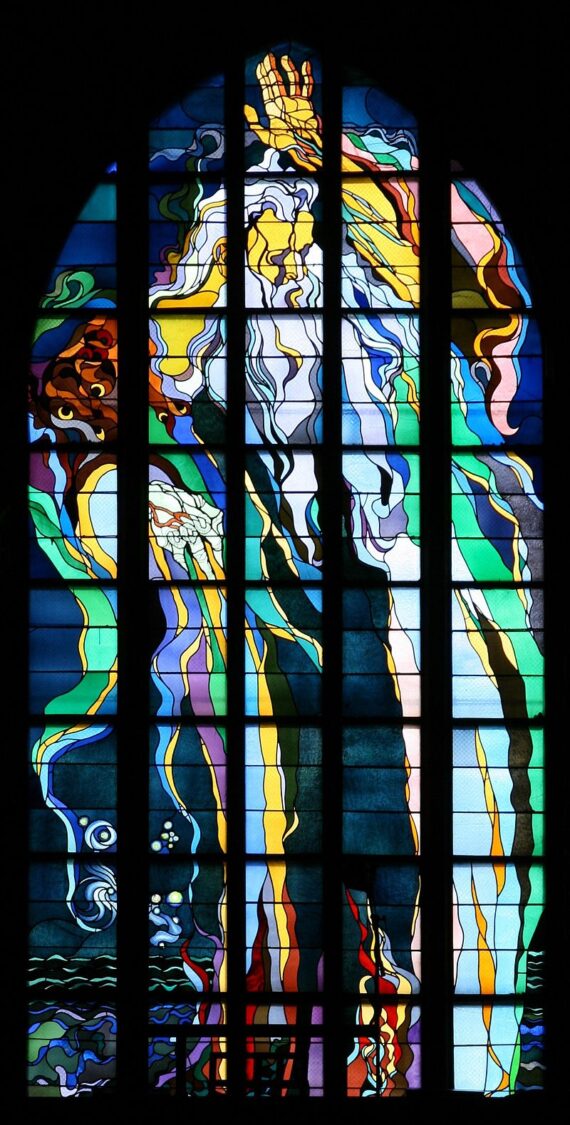
The stained-glass window of Franciscan church in Krakow - 'God the Father' (1904) by Stanisław Wyspiański. Source: Wikipedia.
We hope you enjoyed reading this article and that our suggestions will make your stay in Kraków truly unforgettable. If you are having a little more time to spend in Kraków check our next article where we give you tips on what else is worth seeing in this amazing city!
--
Paweł Bujak












